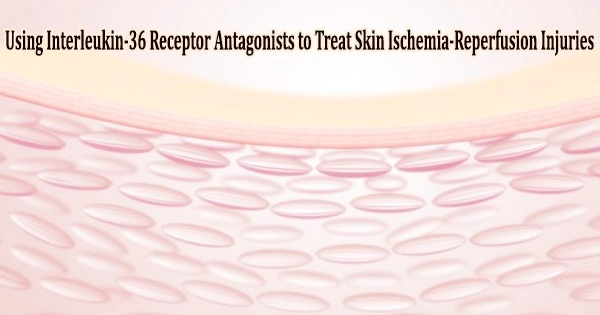Ischemia, which translates to “staunching of blood” in contemporary Latin, is a disease in which the blood supply to various body organs is interrupted. Ischemia can show up as pressure ulcers in people who are bedridden.
Alternatively, it can be Raynaud’s phenomenon in a person experiencing extreme stress. Blood reperfusion to the damaged areas is a treatment option for this illness. The latter, however, raises the possibility of ischemia-reperfusion (I/R) damage, as they are known in medicine.
Skin-based I/R injuries can be exacerbated by inherited immunological mechanisms, for instance in patients who are otherwise showing signs of slow wound healing.
Interleukin-36 receptor antagonist (IL-36Ra), a protein that plays a crucial immunomodulatory role in wound healing, was the focus of the Japanese researchers’ work to better understand the immunological mechanisms behind the development of this illness.
Speaking about the motivation behind their research, Mr. Yoshihito Tanaka from Fujita Health University School of Medicine, Japan, who led the team of scientists in the investigation, explains, “We wanted to understand the immunological mechanisms involved in the healing of wounds from cutaneous ischemia-reperfusion injuries, such as pressure ulcers and Raynaud’s phenomenon, to narrow down possible therapeutic targets. Drawing from experience, IL-36Ra appeared to be a promising candidate for kickstarting our investigation.”
Accordingly, Mr. Tanaka worked with his team to understand how a deficiency of IL-36Ra affects wound healing in cutaneous I/R injuries. For this, the scientists used mice knocked out for the receptor.
We wanted to understand the immunological mechanisms involved in the healing of wounds from cutaneous ischemia-reperfusion injuries, such as pressure ulcers and Raynaud’s phenomenon, to narrow down possible therapeutic targets. Drawing from experience, IL-36Ra appeared to be a promising candidate for kickstarting our investigation.
Mr. Yoshihito Tanaka
Also, they induced cutaneous I/R injuries in knockout and wild-type control mice. Subsequently, they studied corresponding immunological responses in both groups of animals, including the time required for wound healing, infiltration of neutrophils/macrophages (key immune cells) to the site of the wounds, apoptotic skin cells, and activation of other unwanted immunological defense mechanisms.
Their findings have been published as a research article in the Journal of The European Academy of Dermatology and Venereology.
The team, comprising Dr. Kazumitsu Sugiura and Dr. Yohei Iwata from Fujita Health University School of Medicine, among others, was able to pinpoint important results. The scientists found that the absence of IL-36Ra, indeed, significantly slows down wound healing in cutaneous I/R injuries, through increased apoptosis, or ‘suicide’ of useful skin cells, excessive recruitment of inflammatory cells, and employment of unnecessary proinflammatory mechanisms.
Additionally, they demonstrated the role of Cl-amidine, a protein-arginine deiminase inhibitor as effective in normalizing exacerbated I/R injury in IL-36Ra mice. Based on these observations, the scientists assert their findings are the first conclusive report of the involvement of IL-36Ra in cutaneous I/R injury.
The scientists are positive that they have identified a stalwart therapeutic candidate against cutaneous I/R injuries in IL-36Ra. As Mr. Tanaka optimistically adds, “Our research may lead to the development of therapeutic agents for wound healing of various other refractory skin diseases too.”
These team’s discoveries may have inspired the search for new therapeutic targets to treat skin wounds, and it now appears that cutaneous I/R injuries will be less painfully burdensome in the future.





